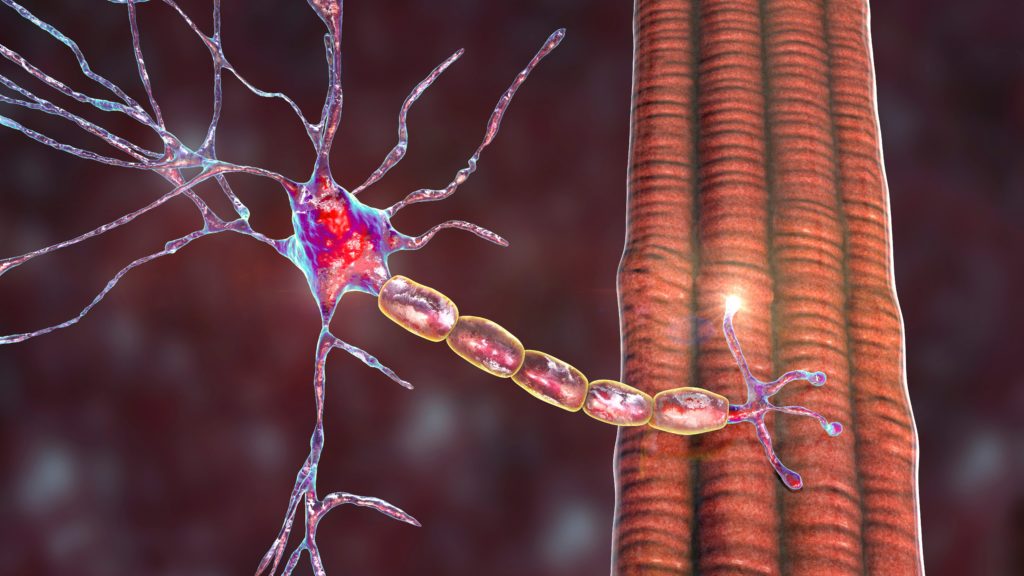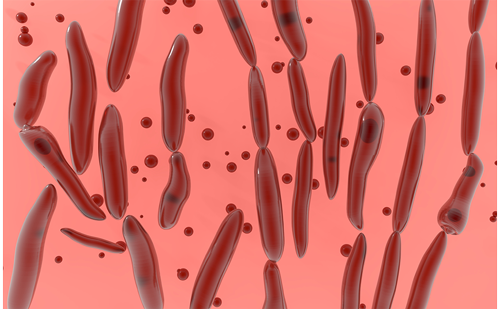Chronic inflammatory demyelinating polyneuropathy (CIDP) is an acquired immune-mediated inflammatory disorder of the peripheral nervous system with an estimated prevalence of about 0.5 per 100,000 children and 1 to 2 per 100,000 adults.1,2 Typical CIDP arises between the ages of 30 and 60 years and is characterised from a progressive, symmetric proximal and distal muscle weakness, paresthesias, sensory dysfunction, impaired balance and reduced or diminished tendon reflexes which evolve slowly over at least 8 weeks. The course can be either monophasic with stepwise progression or relapsing with spontaneous remissions.3 The diagnosis is based, in typical cases, on the time course, distribution pattern of nerve impairment and results of the nerve conduction studies (NCS), that are frequently consistent with a motor and sensory demyelinating polyradiculoneuropathy, with evidence of conduction block and temporal dispersion.4,5 These findings may be further supported from evidence of cytoalbuminologic dissociation in cerebrospinal fluid analysis, but this is not obligatory for the diagnosis.6 Different criteria, such as Inflammatory Neuropathy Cause and Treatment (INCAT), American Academy of Neurology (AAN) and Saperstein, can be used to define the disease.7,8
While the NCS remain nowadays fundamental to confirm the presence, pattern and severity of this type of polyradiculoneuropathy,6 new challenges arose in the last few years, how to acquire the best static and dynamic imaging of the relevant nerve structures in CIDP, aiming to provide a complementary and holistic approach to nerve impairment. Using magnetic resonance imaging (MRI), various hypertrophic changes have been demonstrated in peripheral nerves, roots or brachial plexus in studies on CIDP patients.9–14 Although MRI is a very accurate diagnostic method in imaging soft tissues, it has the disadvantages ofbeing expensive, time-consuming, affected from artefacts (for example metal) and not practical, especially when a number of nerves need to be examined over a long course in patients with polyneuropathy. The role of neuromuscular ultrasound in the diagnostic workup of CIDP and polyneuropathies in general, remains less well defined and parallels the beginnings of research of entrapment neuropathies. Only a few studies in the literature have used ultrasound to examine the pathological changes in immune-mediated neuropathies, highlighting mainly pathological changes of the cross sectional area of peripheral nerves and their correlation with clinical and electrophysiological findings.15–21 This review provides a timely update on the diagnostic role of neuromuscular ultrasound in the diagnostic of CIDP, while possible future possibilities of neuromuscular ultrasound are also discussed.
Quantification of Ultrasound Findings in Immune-mediated Neuropathies
Cross sectional area (CSA) reference values for peripheral nerves and brachial plexus have been reported in various studies in the literature.22–27 The difficulty, however, to differentiate a normal from a pathological heterogeneity of cross sectional area changes in peripheral nerves, especially in CIDP cases, remains an important limitation of neuromuscular ultrasound in clinical practice. Two novel ultrasound measures, aiming to quantify pathological ultrasound changes of peripheral nerves in immune-mediated polyneuropathies, have been recently introduced in the literature: (1) the intranerve cross sectional area variability (for each nerve), defined as maximal cross sectional area / minimal cross sectional area28 and (2) the internerve cross sectional area variability (for each patient), defined as nerve with maximal intranerve cross sectional area variability/nerve with minimal intranerve cross sectional area variability,28 (3) the side to side difference ratio of the intranerve cross sectional area variability (SSDIVA) (for each nerve), defined as side with maximal intranerve cross-sectional area variability / side with minimal intranerve cross-sectional area variability and29 (4) the intraplexus cross sectional area variability defined as: maximal cross sectional area of the brachial plexus / minimal cross sectional area of the brachial plexus (see Table 1).29
Using the intranerve cross-sectional area variability the sonographer may differentiate in immune-mediated neuropathies focal (higher values) from diffuse (lower values) nerve enlargement, while the internerve cross sectional area variability may reveal possible distribution patterns of peripheral nerve impairment.28,29 On the other hand the side to side difference ratio of the intranerve cross sectional area variability may be useful in detecting any lateralisation of pathological changes and the intraplexus cross-sectional area variability in differentiating focal (higher values) from diffuse (lower values) brachial plexus enlargement.29
Ultrasound Findings
Currently ten studies (evaluating a total of 74 cases) on nerve sonography in CIDP patients have been published (see Table 2). The first description of the sonographic findings in CIDP was published from Taniguchi et al.30 In this report, the authors documented a brachial plexus hypertrophy on both sides and peripheral nerve hypertrophy at several sites of the median, sciatic and femoral nerve. Similar findings had only been eported in MRI studies until then.9–14 A possible explanation of the documented hypertrophy (see Figure 1) could derive from the classical ‘onion-bulb’ histological appearance of the nerves in CIDP, as a result of recurrent episodes of demyelination and remyelination.31
After this initial publication, several years passed until the first systematic ultrasound study of CIDP patients was published. In 2004, Matsuoka et al. reported the ultrasound findings of the cervical roots in 13 patients with CIDP and 35 healthy individuals.32 The authors demonstrated a hypertrophy of the cervical roots in nine out of 13 patients with CIDP, a finding that seemed to correlate with the elevated levels of protein in cerebrospinal fluid. Another ultrasound study of 36 CIDP patients from Zaidman et al. confirmed the presence of diffuse nerve enlargements in peripheral nerves in this type of immune-mediated nerve injury.25 Similar findings have been reported in several case reports in the following years.33–36 These findings showed a correlation with the disease duration and nerve conduction findings in a small group of CIDP patients.37 On the other side, Rajabally et al. compared the distal median nerve cross sectional area of 14 CIDP patients to 14 patients with sensory axonal neuropathy of various aetiologies (including alcoholism, vitamin deficiency, impaired glucose tolerance, vasculitis, idiopathic). The authors concluded, that the cross-sectional area of the median nerve was greater in CIDP, when compared to other polyneuropathies (sensitivity of 57 % and specificity of 93 %).38
Another important aspect in the field of sonography in CIDP, is the possible use of this method for identifying nerve conduction blocks. The localisation of the nerve conduction block is often difficult to be made in the nerve conductions studies, especially when dealing with proximal parts of the nerves. By overlooking this typical electrophysiological finding of this disease, a delay in the diagnosis and therefore treatment can occur. In three CIDP cases in the literature, a correlation between the site of hypertrophy detected with ultrasound and the site of conduction block detected with nerve conduction studies was demonstrated.33,39–40 Although this seemed to be a promising development, it is worth noting that Zaidman et al. failed to confirm these findings in a later study.15 Systematic studies on the sensitivity and specificity of this finding failed in the literature. A novel approach to the quantification of the pathological findings in CIDP was recently published in the literature.28,29 Using two new measures, the intranerve- and internerve cross-sectional area variability, in a small group of immune-mediated neuropathies, Padua et al. and Kerasnoudis et al. were able to demonstrate that the CIDP shows preferably a diffuse pattern of nerve enlargement (lower values of intranerve cross-sectional area variability), when compared to other immune-neuropathies, such as the multifocal motor neuropathy (MMN) (higher values of intranerve cross-sectional area variability).
Two CIDP cases reported tried to highlight the possible value of neuromuscular ultrasound as a screening tool of immune therapy. In both cases, following intravenous immunoglobulin or prednisolone therapy the patients bought a remarkable clinical improvement, but the sonographic follow-up did not show any improvement of the pathological findings.33,35 The same observation was done in three cases of multifocal acquired demyelinating sensory and motor neuropathy (MADSAM).20,21 Systematic data on the sensitivity and specificity of sonography as a screening method of immune therapy do not exist.
Conclusions
As the main uncertainties regarding the diagnostic criteria of CIDP are steadily resolved, new challenges continuously arise on how to acquire the best static and dynamic imaging of the relevant nerve structures in this type of immune-mediated disease, aiming to provide a complementary and holistic approach to nerve impairment. Although the first nerve ultrasound studies on CIDP are rewarding to both clinicians and patients, the challenge remains to quantify ultrasound changes and to highlight a possible unique distribution pattern of pathological findings. The newly proposed measurements in the literature28,29 may help to achieve this goal, but multicentre prospective validation and clinical correlations are needed.













